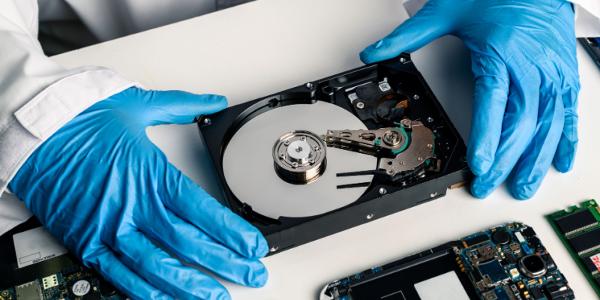Data Recovery: Salvaging Your Files After a Computer Crash
Wednesday 1 May 2024, 8:28PM
By Computer Repair Specialists LTD
216 views

In the digital age, our lives are increasingly intertwined with technology, and the data stored on our devices is often invaluable. Whether it's cherished memories captured in photos, important documents for work or school, or irreplaceable personal files, the loss of data due to a computer crash can be devastating. However, amidst the despair, there's hope in the form of data recovery techniques that can help salvage your files and restore peace of mind.
Understanding Data Loss: Before delving into the solutions, it's essential to understand the common causes of data loss. Computer crashes can occur due to various reasons, including hardware failures, software glitches, virus infections, and human error. Each of these factors can lead to the corruption or deletion of files, rendering them inaccessible to the user.
The Process: Data recovery involves the systematic retrieval of lost or inaccessible data from storage devices such as hard drives, solid-state drives (SSDs), USB flash drives, and memory cards. While the specific techniques may vary depending on the nature of the data loss, the general process typically follows these steps:
Evaluation: The first step is to assess the extent of the data loss and determine the best course of action. This involves identifying the cause of the computer crash and analyzing the condition of the storage device.
Diagnosis: Once the evaluation is complete, data recovery specialists use specialized software tools and techniques to diagnose the problem and identify the location of the lost or corrupted files on the storage device.
Extraction: With the help of advanced software or hardware, technicians attempt to extract the lost data from the damaged storage device. This process may involve repairing corrupted file systems, recovering deleted files, or reconstructing data from fragmented sectors.
Verification: After the data extraction process is complete, technicians verify the integrity of the recovered files to ensure that they are intact and free from errors or corruption.
Restoration: Once the recovered data has been verified, it is then restored to a safe location, such as a new storage device or a cloud-based backup, ensuring that it remains accessible to the user.
Preventive Measures: While data recovery techniques can work wonders in retrieving lost files, prevention is always better than cure when it comes to safeguarding your data. Here are some preventive measures you can take to minimize the risk of data loss:
Regularly back up your important files to an external hard drive, cloud storage service, or network-attached storage (NAS) device.
Install reliable antivirus software and keep it updated to protect your system from malware and virus infections.
Avoid making changes to your system configuration or deleting important files without proper backup or verification.
Invest in quality hardware components and maintain proper airflow and cooling to prevent overheating and hardware failures.
A computer crash can be a harrowing experience, but it doesn't have to spell the end of your precious data. With the help of data recovery techniques and preventive measures, you can effectively salvage your files and mitigate the impact of a computer disaster. Remember to act swiftly, seek professional assistance if needed, and always prioritize the safety and security of your digital assets.